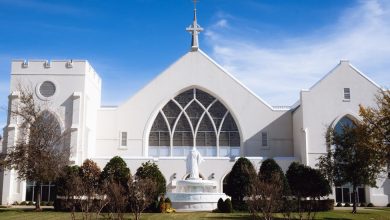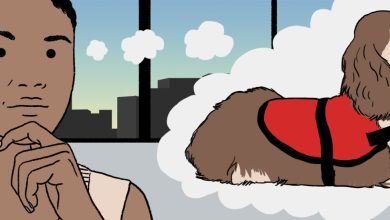The Cause of the Derailed Amtrak Train Remains Unclear

Steve Glaser was in sleeper car No. 730 on Saturday, watching “The Great British Baking Show” on his cellphone and looking forward to the moment his Amtrak train would leave the flat prairie of central Montana for the high mountain passes of Glacier National Park, when the train jerked violently. Instantly, he realized it had derailed.
“If it stays upright,” he thought to himself, “I’m OK.”
His car did, but others toppled over, sending passengers flying through the cars. When the train, which also included two locomotives, came to a stop, Mr. Glaser, 66, and another passenger worked together to pry open a window. He grabbed his briefcase and stepped outside to find train cars strewn along the track and other passengers injured.
Eight of 10 passenger cars had jumped off the tracks when the train carrying 145 passengers and 13 crew members derailed near Joplin, Mont., killing three people and injuring dozens more. As of Sunday afternoon, five people from the crash remained hospitalized at Benefis Health System in Great Falls, all in stable condition.
Officials have not released any information on what they suspect caused the train to derail as it was traveling though an apparently flat and straight section of the route. The wreck is under investigation by the National Transportation Safety Board.
“We share the sense of urgency to understand why the accident happened; however, until the investigation is complete, we will not comment further on the accident itself,” William J. Flynn, the chief executive of Amtrak, said in a statement Sunday. “The N.T.S.B. will identify the cause or causes of this accident, and Amtrak commits to taking appropriate actions to prevent a similar accident in the future.”
Most often, a derailment is caused by speeding around a turn, as was the case in fatal Amtrak crashes in Washington and Philadelphia in recent years. Since those crashes, Amtrak has installed a braking system that prevents trains from exceeding certain speeds and that applies brakes to avoid collisions with other trains or railroad equipment.
“The single largest cause of derailments and accidents are what are called human factors,” said Allan Zarembski, director of the Railroad Engineering and Safety Program at the University of Delaware.
But in this case, he said, the human factors that might cause an accident like this didn’t appear to be present. “More than likely, something broke.”
Excluding human error, he said, most wrecks are caused by faulty equipment — maybe a wheel or an axle, or the track itself.
The train derailed on tracks owned and maintained by BNSF Railway Company, a freight railroad. Most of Amtrak’s national network runs on tracks that belong to freight railroads, meaning Amtrak is not responsible for track upkeep. A BNSF spokesman, Matt Brown, said Sunday that the section of track where the train derailed was last inspected on Sept. 23.
Some passengers reported that the train ride felt bumpy for many miles, which might signal a problem with the train’s suspension system. But even if a train’s crew takes note of a problem like that, its source could be difficult to identify while the train is running between cities, Mr. Zarembski said.
If the turbulence was more sudden, Saturday’s heat could also be to blame, said Russell Quimby, a retired accident investigator for the National Transportation Safety Board.
Mr. Quimby said he suspects the train may have hit a section of the track that had buckled from overheating.
“When that happens, the train can’t negotiate that tight little change in the curvature of the track, and it will run up over the rail and derail and fall over the side like you see in the pictures,” he said.
Around the time of the accident, the temperature in Joplin peaked at 84 degrees. Railroad tracks are usually about 20 to 30 degrees hotter than the outside temperature, Mr. Quimby said, which “could be well above” what the tracks were designed to withstand.
In 1988, an Amtrak train traveling the same route derailed in Saco, Mont., after hitting a track buckle.
“This is a very rare occurrence,” he said. “We haven’t had one in over 30 years in this territory.”
It is unclear whether the train derailed while switching tracks, but if the switch was misaligned, that could also have been the cause, Mr. Quimby said.
Following the wreck, hospitals from across the state took in passengers, some of whom had suffered fractured ribs and collar bones. Aubrey Green, 88, who was returning to Portland after a visit to Havre, Mont., said the car he was riding in fell on its side, and three women “flew over the top of me.”
After the crash, Mr. Glaser said “the community took over.”
Sarah Robbin, the disaster emergency services coordinator for Liberty County, Mont., one of the most rural counties in the state, had spent much of her time over the past few years playing out a scenario like this in her head and planning how best to respond.
In each of the small towns that dot Route 2, which cuts through northern Montana along the railroad tracks, there are just a few hundred to a few thousand residents. The nearest major hospital is hours away by car. Emergency services are sparse.
“We are a small county,” she said, adding that anything like Saturday’s crash “would immediately overwhelm us. Being small and rural, relying on your neighbors is extremely important.”
In the town of Chester, about 7 to 8 miles west of the derailment, a siren system alerts the 1,000 or so residents to any important news. One ring signals a city meeting. Two, an ambulance. Three, a fire call. And four, “some terrible disaster,” said Jesse Anderson, who owns the MX Motel, a 20-room stopover that typically caters to anglers, construction workers and hunters.
When Mr. Anderson heard four sirens yesterday, he assumed it was a mistake. But then he saw fire trucks speeding through the 25 miles-per-hour main street.
“We had no idea it was going to be something of this scale,” he said.
Emergency responders from across at least seven counties rushed in to help. As the only motel for 50 miles, east or west, Mr. Anderson was called on to house some of the passengers. He offered his available rooms free of charge.
Families from a nearby Hutterite colony brought food for passengers while they waited for rides and lodging in the school gym.
Traumatized by the wreck, some passengers said they would never board a train again.
Hedie Kachorek, 71, and her husband, Robert, have been riding trains together for decades. They were on their way to meet their grandson in Seattle when the ride started to get rough. After smooth rails in Illinois and Wisconsin, it started to get uncomfortably bumpy.
As the couple discussed getting off the train early at the Shelby stop, it went off the rails.
Patrick McGeehan contributed reporting.





